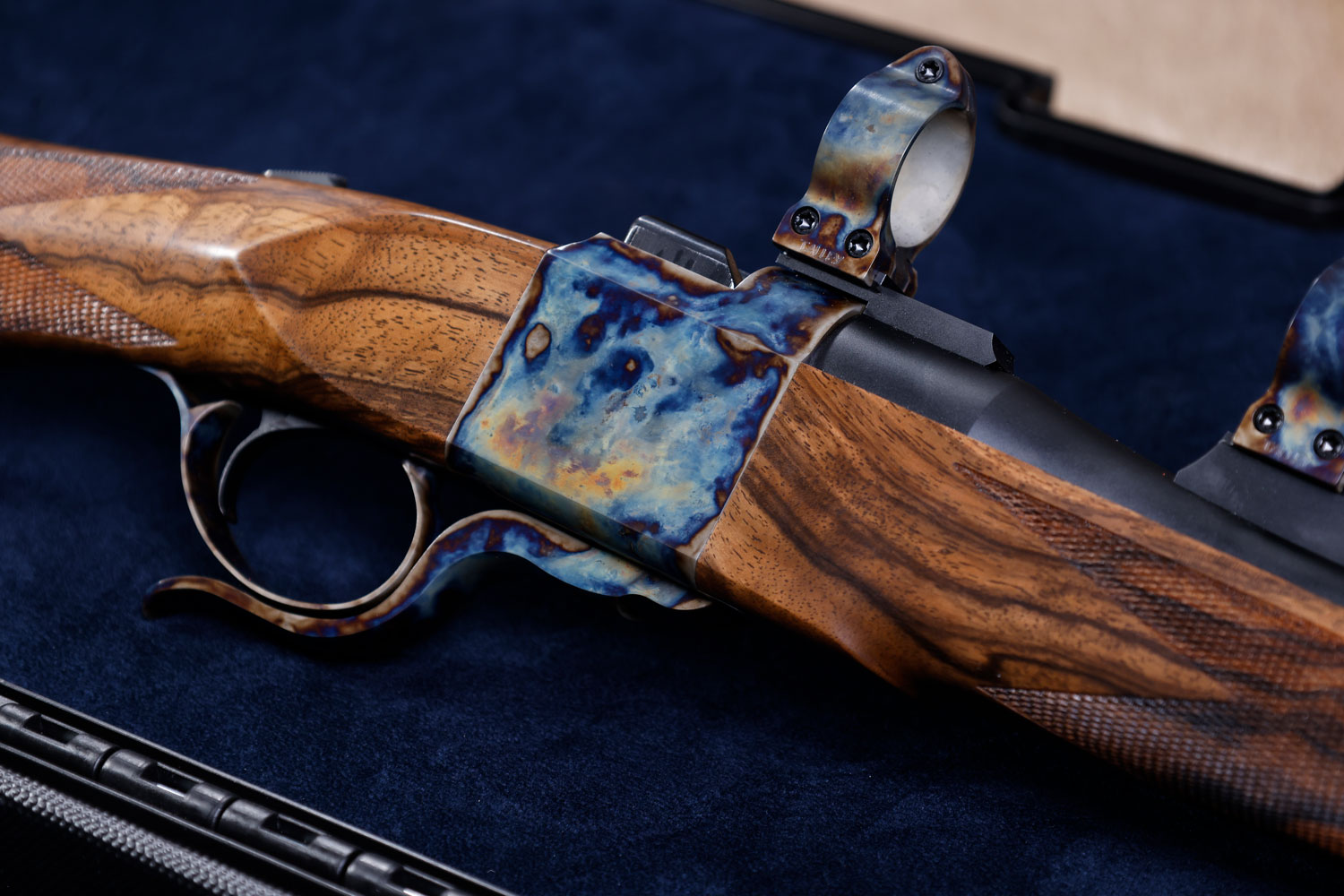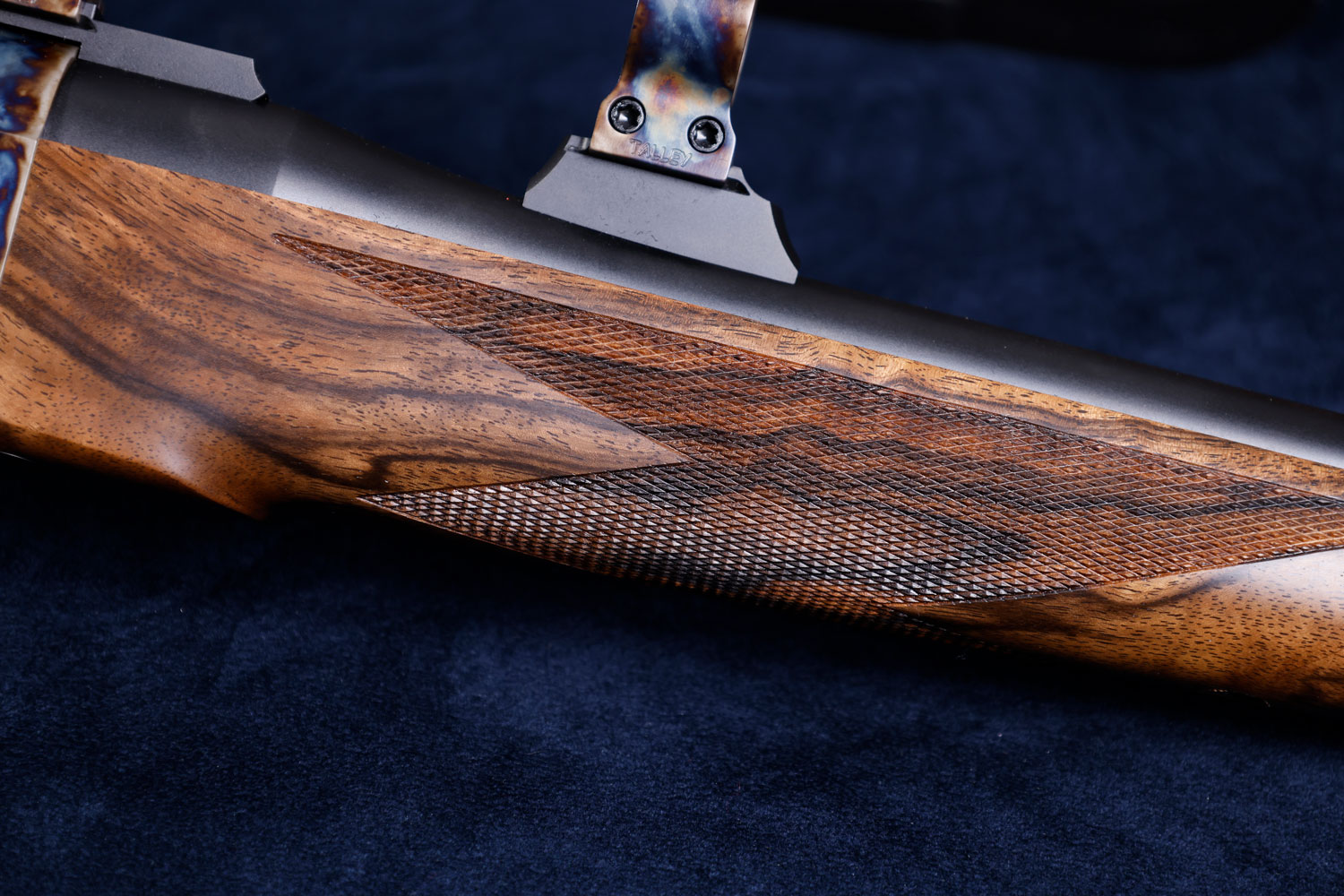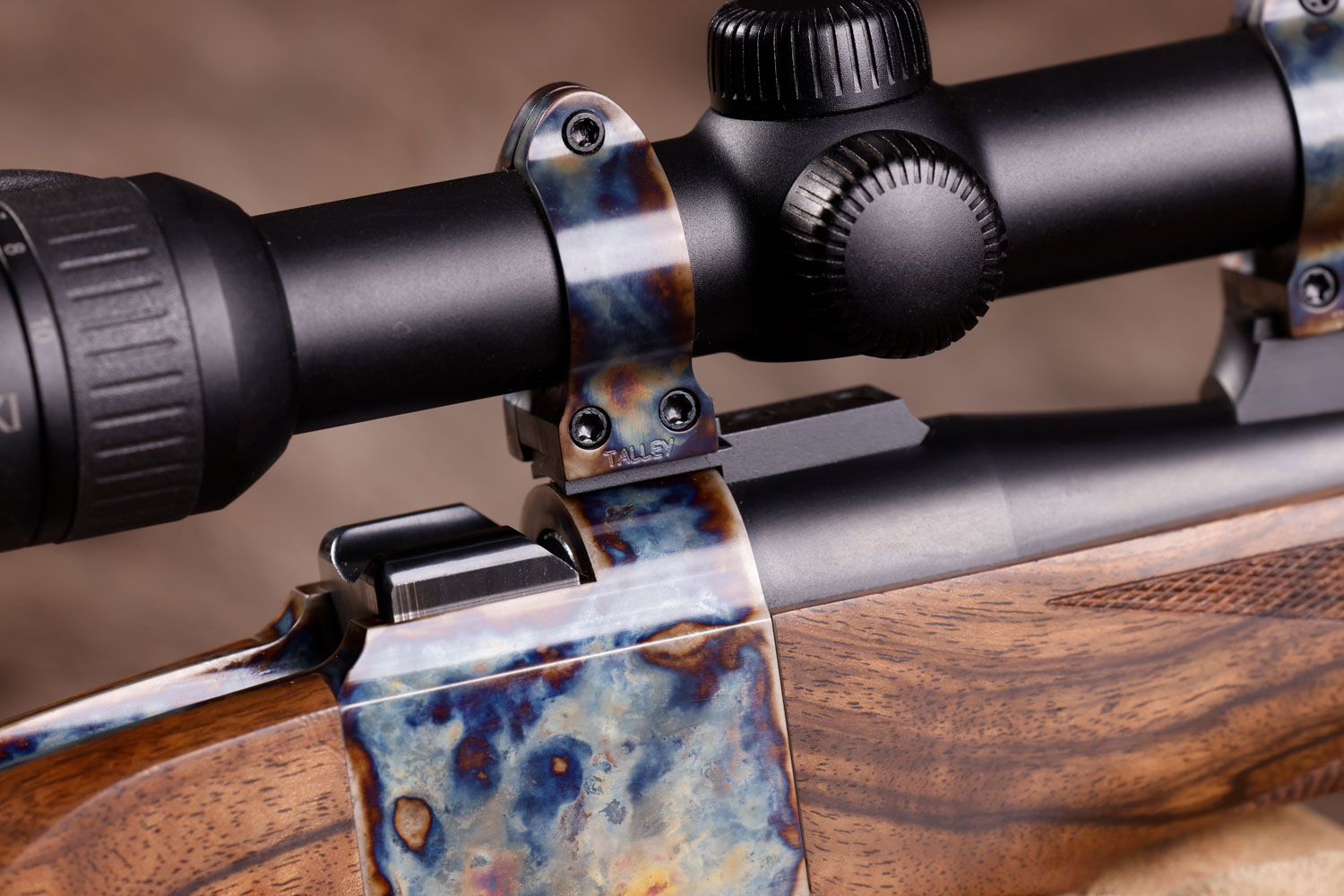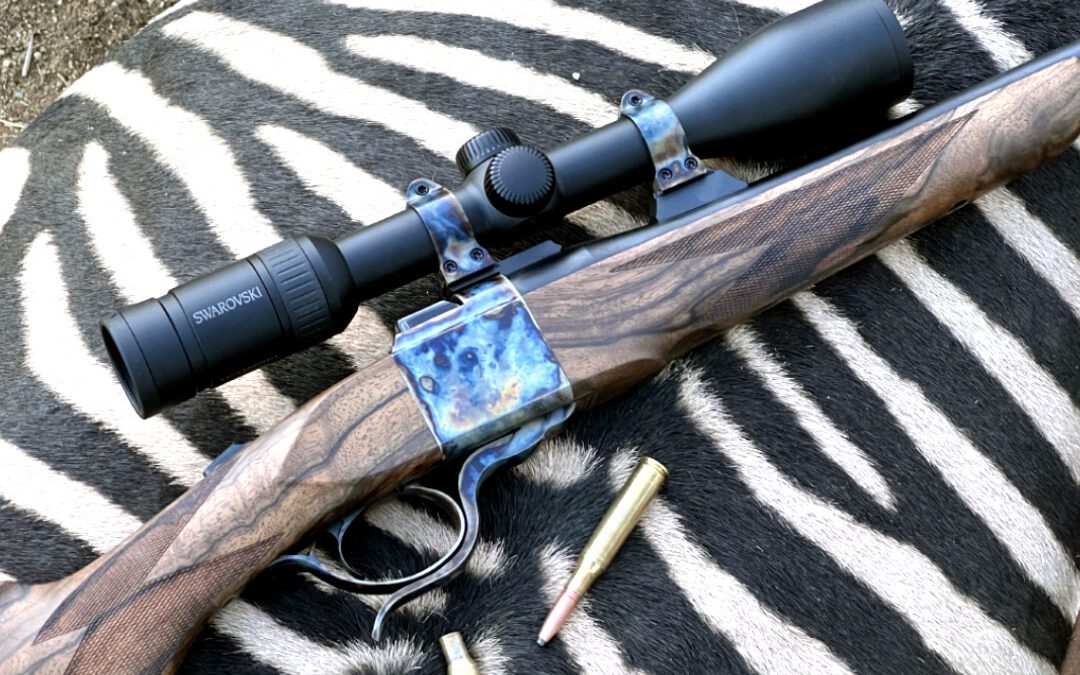A falling block is not the world’s most practical hunting rifle.
There. I said it. Because it’s true.
They are, after all, single shots.
It’s also true that falling blocks are not the most inherently accurate rifles. But they could be the romantic ideal. Especially in the guise of a Parkwest Arms SD-10 which is, despite my second caveat, guaranteed to group three consecutive shots sub-MOA.
Sleek, trim, light, strong, yet elegant, this U.S.-made iteration of the old dropping breech block action captures all of the falling block’s potential while providing a perfect canvas for the rifle maker’s art. There is neither pin nor screw head marring the action.
Like most, if not all falling block rifles, the Parkwest Arms SD-10 (formerly the Dakota Model 10) traces its heritage back through the Ruger No. 1 of 1967, through John Moses Browning’s Winchester external hammer Model 1885, John Farquharson’s hammerless of 1875 and Christian Sharp’s famous buffalo rifle of 1870. Each and all are revered among the world’s sporting arms as durable classics. In fact, all are still being built and sold.
The SD-10 featured here was built-to-order for this columnist, fulfilling a long desire to have-and-to-hold a bespoke rifle with which to cherish-and-to-hunt until death do us part.

Clearly evident are the classic lines of a hunting rifle, the slim, gently tapering forend, the forgiving, open pistol grip and the recoil-minimizing, high, straight comb, all augmented by spectacular exhibition grade English walnut hand checkered in a point wrap pattern at 23 lines-per-inch. The deep, hand-rubbed oil finish was applied over eight days of massaging and sanding. The butt is capped with a black spacer and classic, hard, red rubber recoil pad the likes of which were seen on African big game rifles throughout the 20th century.
The grip cap is not only case color hardened, but inset with this author’s initials hand laid in gold. This cap is secured in place by two slotted screws perfectly timed with the rear tang screw and two tiny screws that secure the Ken Howell sling stud to the butt stock. The only other screw visible is on the forward belly of the forend stock, securing it to the barrel hanger.

Unseen, and for that reason appreciated, on the case color hardened receiver is the unique Don Allen-designed mechanism that enables Parkwest Arms to build this without the usual visible pins and screw heads. All access to the working parts is via removal of the butt stock. This gives access to the lower tang to which are affixed all the working parts—the lever, the breech block, striker, spring, firing pin and extractor, all built to accommodate safe dry-firing within this receiver machined from solid bar stock.
The smoothly sliding tang safety operates two functions: blocking the trigger and intercepting the hammer. Should the trigger/sear connection be compromised, say with a hard fall, the internal intercept prevents the forward movement of the internal hammer. I fully intend to never test this feature. During a May trek with Immenhof Safaris that averaged six miles per day through thorns, over gravel and up and down massive boulders and high, rocky kopjes, this SD-10 remained safely cradled in loving and fiercely protective hands and arms. May it always be so.

For all its durability, style and looks, this SD-10 lives and dies by its matte blued, 23-inch, chromoly Lilja barrel rifled 1:8-inches to stabilize today’s longer 175-grain, high B.C. bullets. It is threaded to the action with threads individually matched to the receiver within a .0005-inch precision fit. This barrel also sports a classic barrel band sling mount plus scope mount bases over the chamber. To these are clamped Talley Screw Lock rings case color hardened to match the receiver, tang, lever, trigger bow and grip cap. The trigger breaks at 2.5 pounds.
Like all SD-10 rifles, mine was range tested by Chief Shop Manager Ward Dobler. He shot several sub-MOA groups with handloads driving Barnes TTSX and Nosler Accubond bullets.
To meet a safari departure deadline, I quickly built two 7x57mm loads. A bonded, 160-grain North Fork semi-spitzer load grouped 1.5 MOA. A 131-grain copper Hammer Hunter load landed just under MOA at about 2,900 fps. Despite distracted shooting on my part (too much thinking about the rifle and not about the shot), the North Forks accounted for eland, oryx, zebra and giraffe at ranges as far as 250 yards. Recovered bullets were classically expanded and intact. The 131-grain Hammers were only employed in taking one impala. The single bullet passed through. The blood trail was wide. And short.
Now that I’ve largely gotten over the flush of love-at-first-sight, I’m beginning to tweak loads, adjust seating depths and otherwise tune rifle and ammo to work together for consistent sub-MOA performance after which, I fear, several other fine hunting rifles will suffer neglect. This is the kind of rifle that, once held, is difficult to put down.
Although single-shot falling blocks have been extant and taking game since at least the buffalo market hunting era in the 1870s, they represent perhaps the least recognized, sold and used rifle action in the hunting fields. More’s the pity because they inspire the kind of reflective, introspective style of hunting that helps wring full value and flavor from each hunt. Knowing you have one good chance, you stalk closer, set up more solidly, choose your shots more carefully and savor the perfection of one shot, one kill. All with a rifle that confirms the truth of the old adage, “Life’s too short to hunt with an ugly rifle.”

